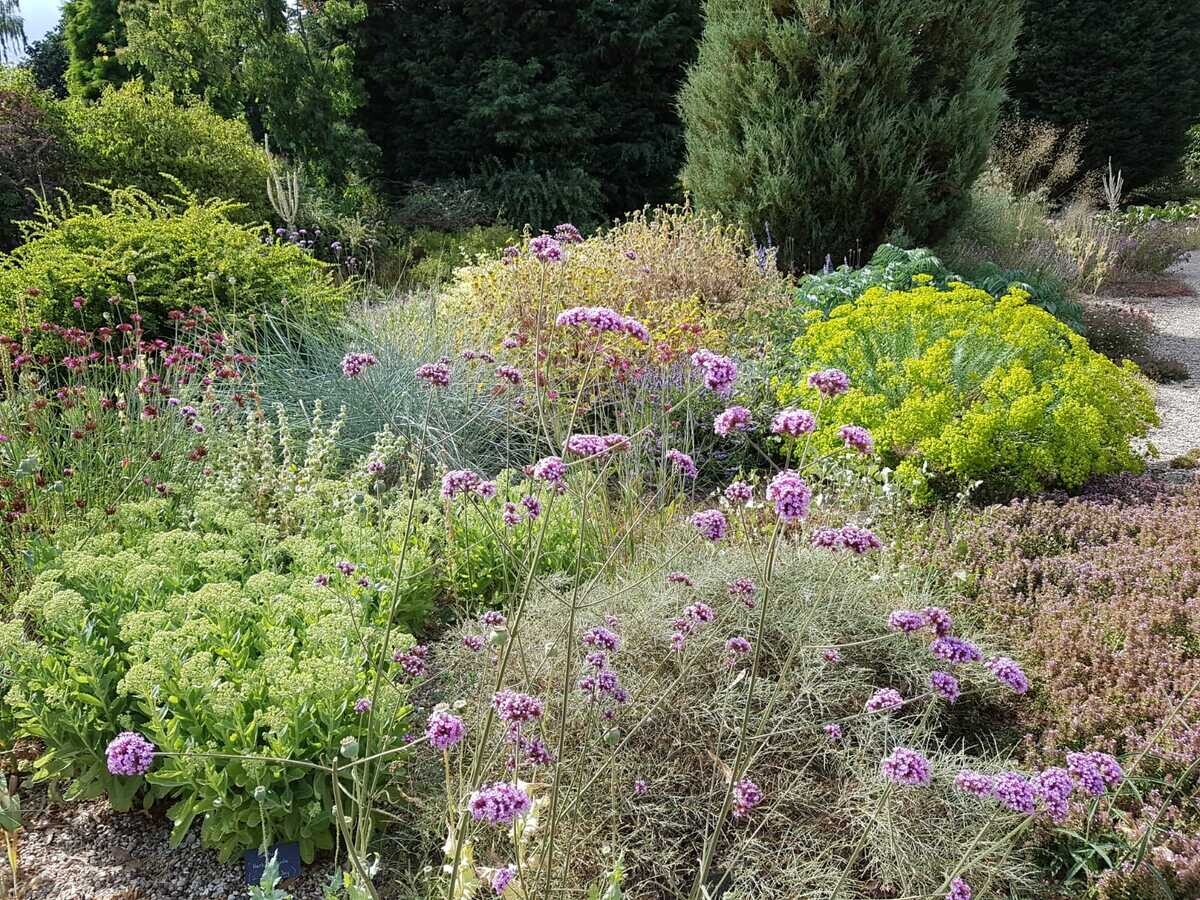Find out what the propagation and garden teams have been up to this week.

How the gardens are coping in these extreme conditions

Heatwave Summer 2018
After weeks of hot and sunny weather with scorching temperatures, there is no doubt that it's turning out to be one of the driest and hottest summers on record.
Pond levels
Visitors may have noticed that the water level in our ponds has dropped very low. This is a combination of the dry weather and us having to use water out of the ponds for irrigating the garden and nursery, due to a faulty bore hole pump (which is being replaced and should arrive end of July). As there’s been no measurable rainfall since the first week of June, the ponds are not filling up very quickly and we have to use the water wisely.
Irrigation
Due to the exceptionally hot and dry weather, we’ve had to water some areas of the gardens, mainly the Woodland and Reservoir Garden. Some visitors have expressed surprised to see us irrigating the gardens during the day, but while the nursery has an automated irrigation system, which comes on early in the morning and then again at night, the irrigation in the garden must be switched on and moved around manually.
Grass
The Water Garden lies in a boggy hollow where the grass tends to stay green, whereas up in the Reservoir Garden the lawn has turned brown. To save water, we’re only irrigating where it’s absolutely necessary and given how little water there is in our ponds, we’ve made the decision not to water the grass, as droughted lawns always green up again when it eventually rains.
Cutting back plants
A way to lessen herbaceous plants' need for water during prolonged droughts is to cut them back by half or right to the ground, depending on how much they are suffering. This year we’ve cut back several clumps of astrantia, phlox, rudbeckia, nepeta and salvia. They may not put on a great show this year, but should at least produce fresh foliage (and hopefully some flowers) once the temperatures drop and the weather turn wetter.
Plants coping with drought
The Gravel Garden, created in the early 1990’s, is never irrigated. The plants here have been chosen for their ability to cope with drought.
Different ways plants cope with drought:
* Very small leaves reduce the surface from which water is lost.
* Silver or grey leaves reflect the harsh sunlight, thus reducing the heat and evaporation.
* A coating of fine hairs helping to trap any available moisture, such as early morning dew.
* Glaucous leaves often a have a waxy, protective coating.
* Long tap roots go deep into the soil and can locate water deep underground.
* Succulent plants store water in their fleshy leaves.
Some plants, such as Acaena inermis ‘Purpurea’, look dead but retreat underground during prolonged periods of droughts and re-emerge again once the weather turn cooler and wetter.
This summer has really put the plants in the Gravel Garden to the test. Some plants have struggled while others have performed exceptionally well despite the tough conditions (see list below).
Gravel Garden top performers
Allium carinatum subsp. pulchellum. and A. flavum
Eryngium bourgatii and E. giganteum
Hylotelephium (particularly H. ‘Autumn Joy’)
Papaver somniferum
Salvia sclarea var. turkestanica
Stipa barbata, S. gigantea, S. splendens and S. tenuissima
Yucca
Rainfall 2018
Month | Rainfall in mm | Rainfall in inches |
January | 101 | 3.4 |
February | 39 | 1.5 |
March | 65 | 2.5 |
April | 60 | 2.4 |
May | 42 | 1.7 |
June | 3 | 0.1 |
July | 0 | 0 |


Pennisetum alopecuroides 'Hameln'
Chamaerops humilis var. argentea
Euphorbia characias
Rosemaries and santolinas
but strangely, the Verbena bonariensis isn't doing well at all!
I'm very happy you're keeping the garden on. My best wishes to you all
I am now in my 80's and have just been forced to downsize and say goodbye to the garden I created on a hillside that I used to open for Charity in Bath.
I have brought many of Beth's choice plants with me and created a much smaller
garden to suit my advancing years.
Wandering round amongst them reminds me of of Beth and those early years. The enthusiasm she gave me for 'plants in the right place' is still very much with me .